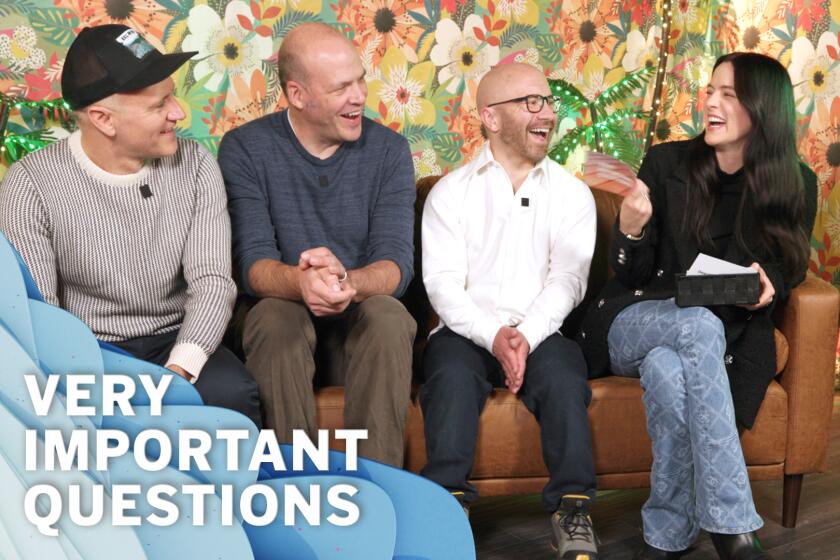Indie creatures to the core, David and Nathan Zellner cut their own path through the wild
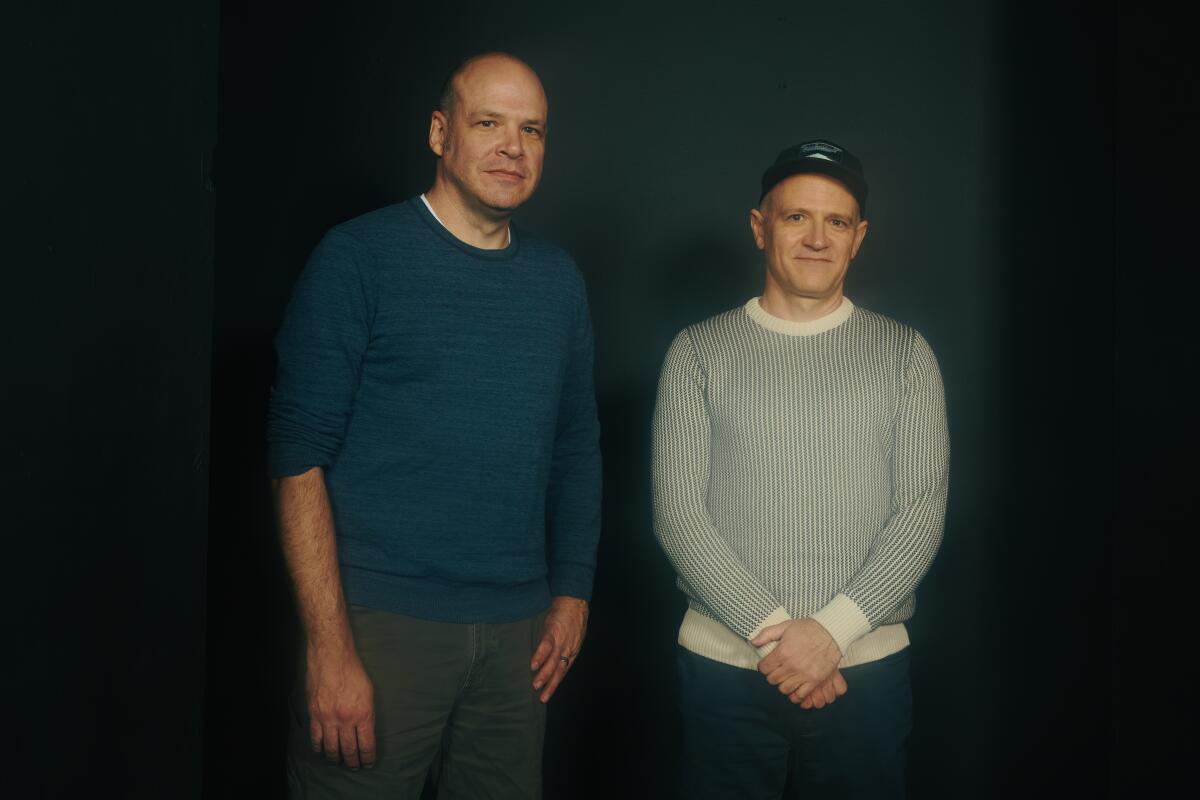
A family makes their way through a woodland forest, eventually stopping to set up camp. They have something to eat, go to sleep and then get up to do it all over again.
Except this isn’t a family on a wilderness getaway. It’s a group of shaggy, mythical creatures known as Sasquatch, going about their day-to-day existence. The film “Sasquatch Sunset,” is unexpectedly heartfelt and moving (even as it’s also quite funny) in its exploration of the dynamics of their lives as they defecate, lactate, fornicate, urinate, procreate, masticate and generally make their way through the world.
The latest creation from filmmaking brothers Nathan and David Zellner, “Sasquatch Sunset” feels like an extension of their ongoing off-beat explorations of behavior amid the natural world. Having first emerged as prolific makers of short films, their features now include 2014’s “Kumiko, the Treasure Hunter,” starring Rinko Kikuchi, and the 2018 western comedy “Damsel,” starring Mia Wasikowska and Robert Pattinson. They also recently directed episodes of the television series “The Curse,” starring Nathan Fielder, Benny Safdie and Emma Stone.
The Sasquatch family of their latest is played by Nathan Zellner, Christophe Zajac-Denek, Jesse Eisenberg and Riley Keough, all rendered unrecognizable beneath elaborate prosthetics and costumes. The film functions as an examination of family ties, a meditation on what makes a society and a plea for saving the environment. Which is all rather astonishing for a film with no conventional dialogue, as the creatures communicate through a language of grunts. And for a movie that freely mines body humor, there is a vivid and delicate emotional side as well.
“That was the goal — we wanted to kind of creep it in,” says David Zellner, 50, during a recent interview alongside Nathan in Austin, Texas, at the South by Southwest Film Festival. ‘We liked the idea of taking something that someone else might do as a one-note joke and then giving it a reverence and humanizing it as much as possible. It’s absurd from the outset, but can we make people care about it and give it more depth and resonance and have it work on different levels? You have to find things about it that you could connect with.”
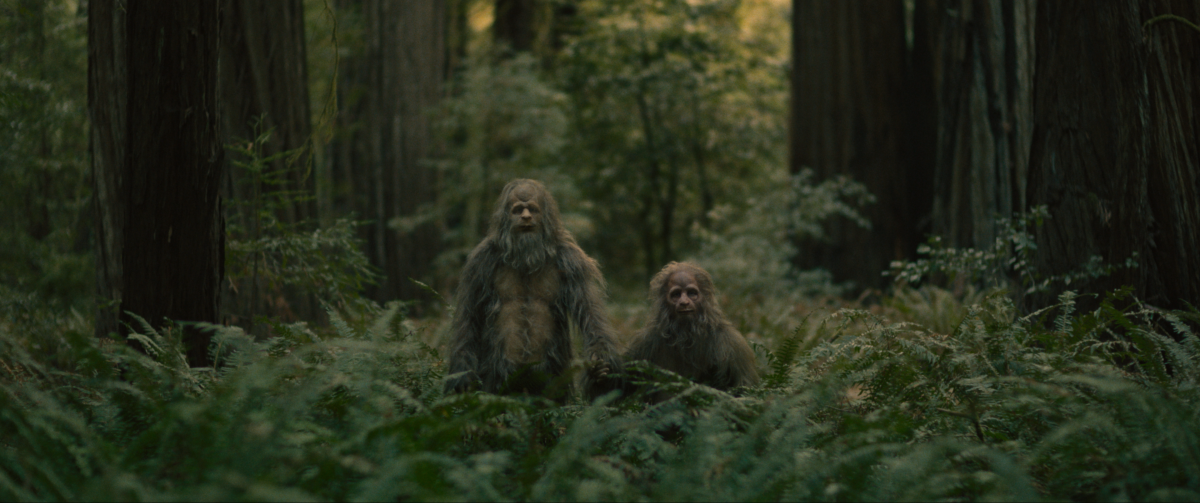
The script was a 60-page document that included all of the story points and emotional beats of the film, built around a structure of the four seasons, even as it had no dialogue.
Keough, 34, recently the star of “Under the Bridge” and “Daisy Jones & the Six,” had already been aware of the Zellners’ films and had read the screenplay for “Damsel” before being sent “Sasquatch Sunset.”
“I got the script and it was just all the things that I love — absurd and hilarious and touching and poetic and beautiful and emotional, and somehow totally gripping and there’s no dialogue whatsoever,” says the actor on the phone from London.
“I hope the script gets published so people can read it or it at least gets leaked, because the script is one of the best scripts I’ve ever read,” agrees Eisenberg, 40, calling from New York City. “I’ve had this a few times before, where you know from reading it what every shot needs to be. Although the tone is unusual, the tone is so clear in the script, it’s so intentional and funny and full of pathos.”
Originally from Colorado, the Zellners first emerged as part of Austin’s vibrant filmmaking community. (Nathan, 48, still lives in Austin while David now lives in Los Angeles.) It speaks to the Zellners’ restless creative curiosity that when trying to figure out an Austin location for our interview, they didn’t want to go to some favorite haunt, but rather a new tiki bar neither of them had been to before.
As they decide what to order from the extensive menu, enthusiastically noting the fanciful drinks passing by to other tables Nathan expresses gentle concern over what David will eat.
“I’ve got a thing with bones,” David says. “It’s my problem, it’s not the bones’ problem.”
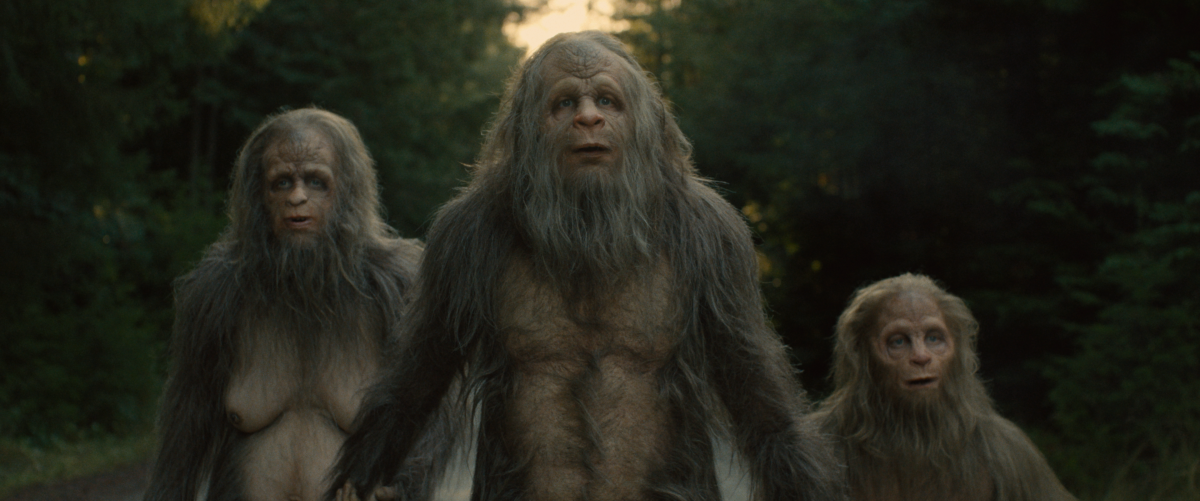
The Zellners first designed a homemade Sasquatch costume for their 2001 short “Frontier.” They used the same costume for 2011’s “Sasquatch Birth Journal 2.”
“You never throw the costume away,” said Nathan Zellner. “You never know when you might need it.”
“We’ve always been obsessed with Bigfoot,” said David Zellner with a mixture of playfulness and earnestness. “But every time there’s footage of Bigfoot, it’s always of it walking or running away. And so we were like, ‘Well, what else is it doing?’ It’s doing the same things that any other animals are doing. Why isn’t that caught on film? But then in this context, because it’s this mythical creature, because of the way it represents this link between man and animal, it’s both familiar and uncomfortable watching it do these things that you attribute to animalistic behavior.”
Among the producers on the film are Lars Knudsen and director Ari Aster and their company Square Peg. They brought on Steve Newburn, who worked on Aster’s “Beau is Afraid,” to create the creature costumes. Specific attention was given to making sure the actors’ faces could still be expressive under their prosthetics, and that their eyes would be clearly visible.
“I probably can speak for most actors by saying I don’t love wearing prosthetics,” says Eisenberg. “It’s incredibly grueling and difficult to act. When David asked to send me his new script, I was thrilled because I love David’s writing and we share everything. But when he told me he wanted me to play a part in it and that it was going to all be creature work, I said, ‘Thank you. I can’t wait to read it. And I assure you, I’ll never do something like that.’”
Yet Eisenberg was quickly won over. “When I read it, within like two pages, you realize that this thing is as wonderful as any kind of indie drama that you could do,” he says. “The humor was so funny and so inventive and original and yet always grounded in character. I know it sounds so strange to say that because our characters are not human, and yet the emotions were so clear to me. These characters were written with a real kind of specific spirit in mind that differentiated them, that made them individual.”
Eisenberg, who also premiered his own latest effort as writer and director, “A Real Pain,” at Sundance this year, met the Zellners at a film festival in Poland nearly 20 years ago and was immediately struck by the integrity and originality of their work.
“I met them when I was very young, and it was when I was starting to watch kind of more unusual independent films,” says Eisenberg. “I aspired to either write or act in movies that were similar in tone. It’s just really hard to pull those things off. And ‘Sasquatch’ to me seems like the culmination of all of that because the premise is a complete personification of that unusual sensibility.”
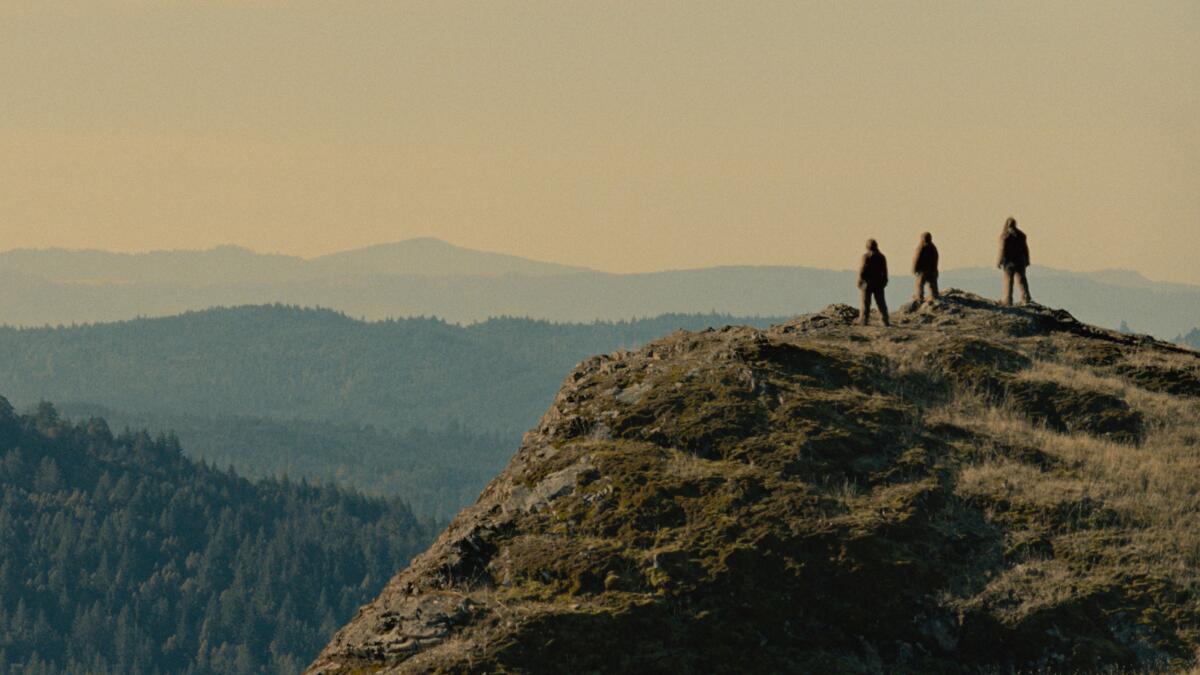
The Zellners have a knack for shooting in unusual locations. “Sasquatch Sunset” was shot in Humboldt County in Northern California, a hotbed for claims of real-world Sasquatch sightings. Some of the same locations were used for the Ewoks’ planet of Endor in “Return of the Jedi.” Having the actors in their costumes not on soundstages but in remote outdoor locations proved a challenge.
“There’s something about the adventure of going to places that are difficult to get to because you’re getting something singular out of that,” said David Zellner, citing the influence of the films of Werner Herzog.
“It just subconsciously worked well for this one, like nature docs where you’re seeing a part of the Earth that you’ve never seen before,” continues Nathan Zellner. “You have to put them in an environment that feels otherworldly.”
For the actors, performing in the costumes also took some getting used to.
“I definitely approached this differently to anything I’ve ever done before,” says Keough. “You have to transform in a way that’s really extreme, but really fun. That’s kind of the dream when you’re an actor — for me anyway. The more I can l disappear, the more fun the process is.”
Says Eisenberg: “It did require kind of getting away from the sensor in my head that tells me I’m overacting. You have to kind of overdo things in order to have them be conveyed. Even things that appear on screen as very subtle — when you’re inside the suit, they feel quite broad.”
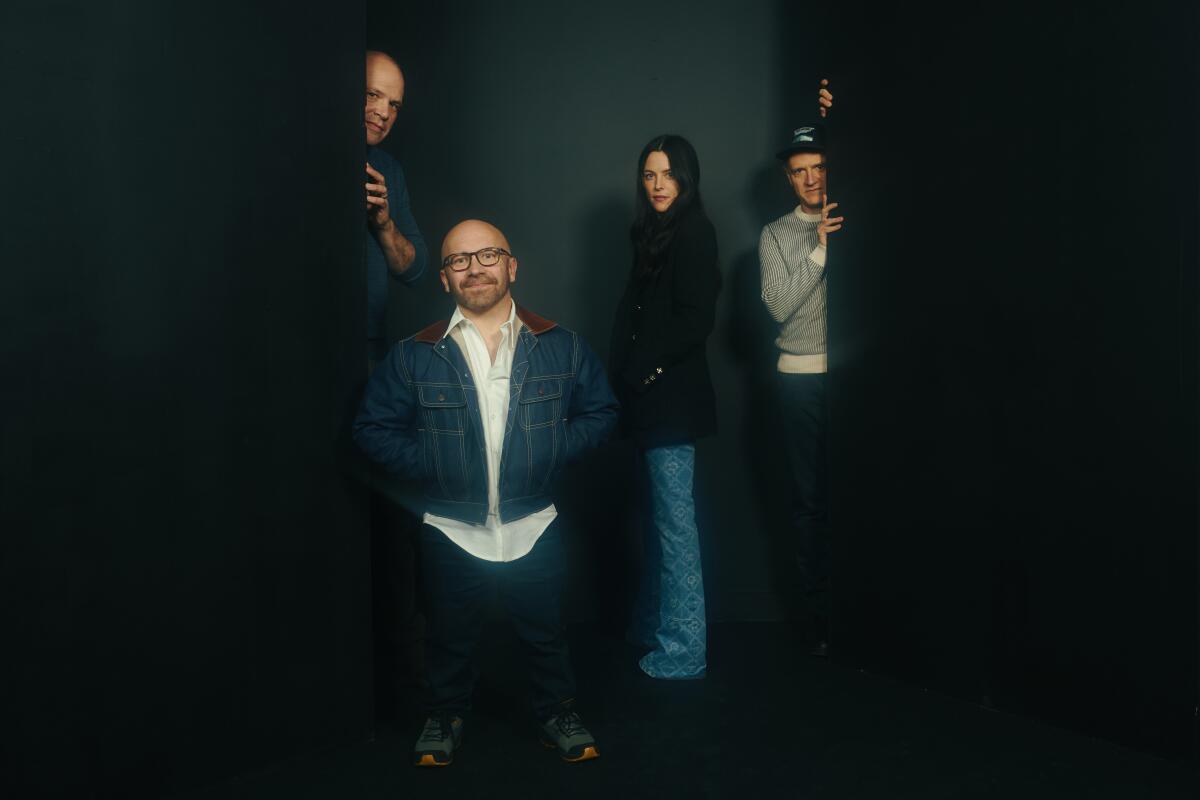
Keough also was taken by the many layers of meaning that can be read into the film’s story.
“It can be as profound as you want it to be,” says Keough. “It can be about a family of Sasquatch living in the redwoods. It can be about family relationships and grief and birth and life and death. It can be about the encroachment on the natural world. I think that they did something really special, which was make you connect to these characters who are not human in a very human way. And that’s a really powerful thing to do.”
At a moment when other notable long-running sibling filmmaking teams — the Coens, the Duplasses, the Safdies — are all taking a break from one another, David and Nathan Zellner are still going strong, in part because no one makes the other one laugh in quite the same way.
“We’ve just never had any other way,” says David. “From when we were making home movies on VHS and we were like 8 years old to now, there’s never been a break. We just kept trying to make things less s— as we went along.”
Jesse Eisenberg and Riley Keough — you’ll have to take our word for it — suit up as woodland creatures in David and Nathan Zellner’s goofy, wordless wonder.
“When you have grown up on the same movies and you can make yourselves laugh by just saying one word or that reminds you of some joke or something like that, I think that’s a big part of it,” says Nathan.
Though they have had some larger projects in development that have fallen apart, including a “Looney Tunes” project at Warner Bros., the Zellners are quite happy with the scale of their work and their ability to simply keep creating something new.
“I don’t know if it’s the best career path, but we always looked at it as the path of an artist rather than a careerist path,” says David. “But we never even articulated it that much. It’s just always been, from when we were little kids, the need to create something. I don’t know if that’s good or bad, it’s just been the way we’ve been where it was less strategic and more just intuitive, what we’re most passionate about and what feels fresh and new to us.”
“And it’s hard to pitch because no one knows what it is,” adds Nathan.
“We love cinema so much, but then are also bored by so much of the repetition,” says David. “We’re just trying in our own tiny, minuscule way to push the medium a little in some kind of interesting direction. And whatever happens with it happens.”
Continuing to operate very much on their own terms, the Zellners are far from lost in the wilderness. They sound like happy wanderers making their own way.
More to Read
Only good movies
Get the Indie Focus newsletter, Mark Olsen's weekly guide to the world of cinema.
You may occasionally receive promotional content from the Los Angeles Times.
